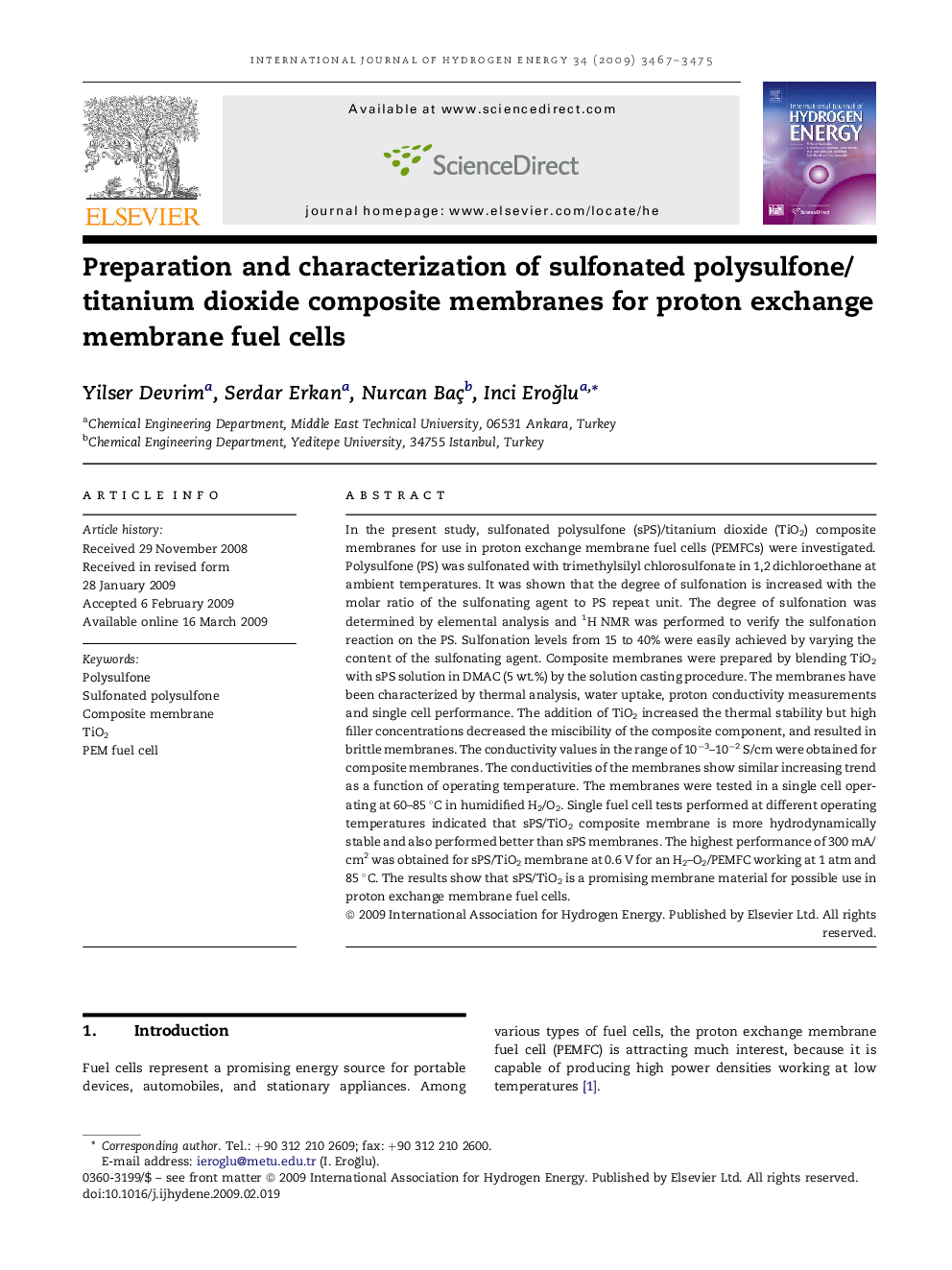| Article ID | Journal | Published Year | Pages | File Type |
|---|---|---|---|---|
| 1274048 | International Journal of Hydrogen Energy | 2009 | 9 Pages |
In the present study, sulfonated polysulfone (sPS)/titanium dioxide (TiO2) composite membranes for use in proton exchange membrane fuel cells (PEMFCs) were investigated. Polysulfone (PS) was sulfonated with trimethylsilyl chlorosulfonate in 1,2 dichloroethane at ambient temperatures. It was shown that the degree of sulfonation is increased with the molar ratio of the sulfonating agent to PS repeat unit. The degree of sulfonation was determined by elemental analysis and 1H NMR was performed to verify the sulfonation reaction on the PS. Sulfonation levels from 15 to 40% were easily achieved by varying the content of the sulfonating agent. Composite membranes were prepared by blending TiO2 with sPS solution in DMAC (5 wt.%) by the solution casting procedure. The membranes have been characterized by thermal analysis, water uptake, proton conductivity measurements and single cell performance. The addition of TiO2 increased the thermal stability but high filler concentrations decreased the miscibility of the composite component, and resulted in brittle membranes. The conductivity values in the range of 10−3–10−2 S/cm were obtained for composite membranes. The conductivities of the membranes show similar increasing trend as a function of operating temperature. The membranes were tested in a single cell operating at 60–85 °C in humidified H2/O2. Single fuel cell tests performed at different operating temperatures indicated that sPS/TiO2 composite membrane is more hydrodynamically stable and also performed better than sPS membranes. The highest performance of 300 mA/cm2 was obtained for sPS/TiO2 membrane at 0.6 V for an H2–O2/PEMFC working at 1 atm and 85 °C. The results show that sPS/TiO2 is a promising membrane material for possible use in proton exchange membrane fuel cells.
